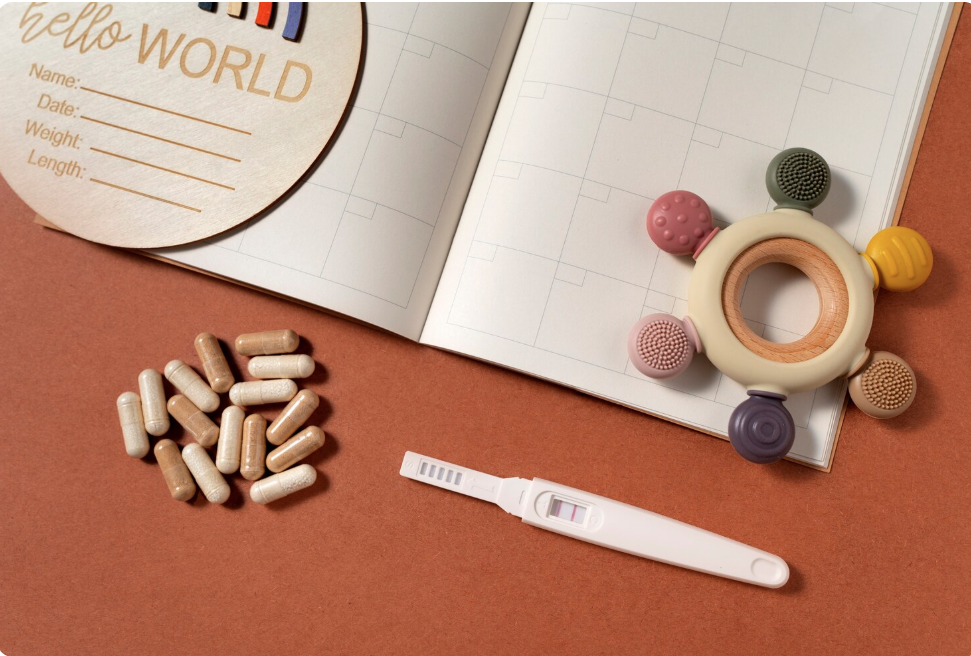Modern life gives you endless health options—workout apps, skincare routines, supplements, diet trends, meditation tools. It’s like walking into a giant health supermarket with thousands of products and no clear shopping list. The result is predictable: people try a bit of everything, stick with nothing for long, and don’t see the steady improvements they actually want.
The good news is that most of the big health wins come from a surprisingly short list of habits: moving regularly, eating well, sleeping enough, and managing stress while avoiding obvious risks like smoking and heavy drinking. (CDC) The challenge isn’t knowing what matters—it’s turning scattered ideas into a simple system you can follow in real life.
Four “Aisles” in Your Personal Health Mart
Instead of chasing every new trick, organize your lifestyle into four main “aisles.” Most of what really moves the needle will live in one of these:
- Movement – daily activity plus some structured exercise
- Nutrition – what you eat most of the time
- Recovery – sleep and rest
- Stress & Mindset – how you handle pressure and emotions
Research on chronic diseases like heart disease, type 2 diabetes, and some cancers keeps pointing back to these same levers. Healthy eating and regular physical activity can dramatically delay or prevent many chronic conditions, especially when combined with other positive lifestyle changes. (PMC)
You don’t need perfection in all four aisles. You just need steady, realistic improvement in each.
Movement: A Weekly Plan You Can Actually Stick To
You don’t have to train like an athlete to protect your long-term health. Even moderate, consistent activity improves weight management, blood pressure, blood sugar, and mood. (PMC)
A practical, sustainable structure might look like this:
- Most days: 20–30 minutes of brisk walking or similar light activity
- 2–3 days per week: simple strength training (bodyweight, resistance bands, or weights)
- Whenever you can: short “movement snacks” — taking the stairs, stretching after sitting, a quick walk after meals
The details (gym vs. home workouts, yoga vs. cycling) are less important than consistency and gradual progression. Ask: What can I keep doing for the next six months, not just this week?
Nutrition: Shopping and Eating With a Long-Term Lens
Most major health organizations agree on the basics of a health-protective diet: more vegetables, fruits, whole grains, legumes, nuts, and healthy fats; less ultra-processed food, added sugars, and excess salt. (ScienceDirect)
A simple way to apply this:
- Build your plate so that about half is vegetables or fruit, a quarter is whole-grain or starchy foods (like brown rice or potatoes with skin), and a quarter is protein (beans, lentils, tofu, fish, eggs, or lean meat).
- Shop the perimeter of the grocery store—produce, dairy, lean proteins—and treat the heavily processed snack aisles as occasional add-ons, not your main source of calories.
- Choose patterns over rules. Instead of “never eat X,” think “most of my meals are built from whole foods; treats are occasional and intentional.”
You can still enjoy your favorite foods; you’re just shifting the balance toward ingredients your body can use to repair, protect, and perform.
Recovery: Making Sleep a Non-Negotiable
Sleep isn’t just rest; it’s repair time for your brain, immune system, hormones, and metabolism. Chronic sleep problems are linked to higher risk of obesity, diabetes, depression, and cardiovascular disease. (ScienceDirect)
A realistic sleep routine might include:
- A consistent window of roughly 7–9 hours in bed most nights
- A wind-down routine—dim lights, light reading, stretching, or calming audio instead of doom-scrolling
- Keeping your room cool, dark, and quiet where possible
You won’t sleep perfectly every night, but protecting this window most of the time makes everything else—exercise, food choices, mood—much easier.
Stress & Mindset: The Invisible Health Factor
Chronic stress, especially when combined with poor sleep and inactivity, doesn’t just feel bad; it’s associated with higher risk of metabolic and cardiovascular problems over time. (PLOS)
Helpful practices don’t need to be complicated:
- Short breathing exercises or mini-breaks between tasks
- Daily walks without screens, just for mental “air”
- Regular check-ins with supportive friends or family
- Journaling or simple reflection on what went well each day
If stress, anxiety, or low mood feel overwhelming or constant, it’s important to talk with a qualified professional. Lifestyle changes help, but they’re not a replacement for proper care when you need it.
Turning Articles and Advice Into a Personal Health Hub
If you read health blogs and magazines regularly, you probably have:
- Workout PDFs or screenshots
- Recipe collections and meal plans
- Skincare or self-care guides
- Lab results and doctor visit summaries
- Rehab or stretching instructions
Left unorganized, these become digital clutter. But if you treat them like items on a shelf in your own “health mart,” they can become a powerful toolkit instead of a pile of random files.
A simple approach:
- Create a main “Health” folder on your computer or in cloud storage.
- Add subfolders like Movement, Nutrition, Sleep & Stress, and Medical.
- Each time you download a useful guide or get a health-related PDF, rename it clearly (“2025-05 – Bloodwork Results” or “4-Week Walking Plan”) and drop it into the right folder.
Digital health records and personal health portals make it easier than ever to access your information anytime, and organized records help both you and your clinicians make better decisions. (Adobe)
Building a Simple “Health Binder” With PDFs
Over time, you’ll notice certain files are more important than others—your current workout plan, your latest lab results, or the nutrition guidelines you’re actually trying to follow this season. Instead of opening five different documents every time, you can create a single “health binder” PDF for your current goals.
A tool like pdfmigo.com can help you do this without any design skills. For example, you might:
- Take your workout program, grocery list, and one-page sleep checklist and use merge PDF to combine them into a single file called “My 8-Week Energy Plan.”
- If that file becomes too long as you add more pages, you can later split PDF into smaller packs, such as a dedicated “Exercise Pack” and a separate “Checkups & Labs Pack.”
Now, instead of hunting for scattered notes, you have one or two clean documents you can open on your phone whenever you shop, cook, train, or talk with a healthcare provider.
Reviewing and Updating Your System Over Time
Your health needs won’t be the same forever. There will be busy seasons, calm stretches, injuries, travel, and new priorities. Instead of throwing everything out and starting from zero each time, treat your health system like a living document:
- Every month or two, skim your binder and ask: What’s actually helping? What isn’t realistic right now?
- Keep the habits and resources that are working; archive or delete the rest.
- Add new pages when you get updated test results, a revised treatment plan, or a better workout structure.
Patients who are more engaged with their own health information—tracking, reviewing, and understanding their data—tend to have better knowledge, self-management, and clinical outcomes. (PMC)
Bringing It All Together
You don’t need a perfect routine or a shelf full of products to take control of your health. You need:
- A clear view of the four big aisles: movement, nutrition, recovery, and stress
- A small set of daily and weekly habits you can actually sustain
- A simple way to organize the information and tools you collect
When you treat your lifestyle like your own personal health mart—choosing carefully, organizing what you keep, and returning to the basics again and again—you stop bouncing between trends and start building a body and mind that feel better, year after year.














